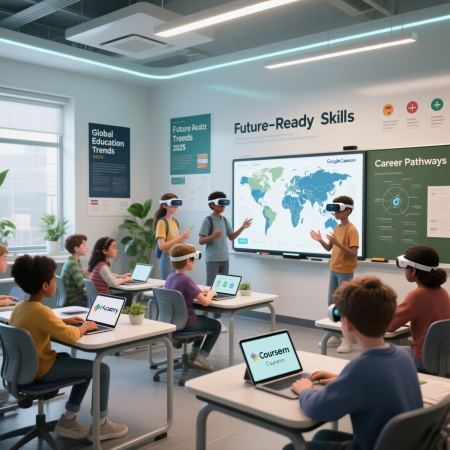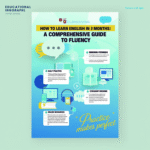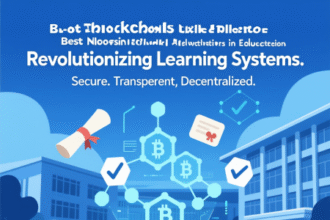The global education landscape is undergoing a seismic shift, driven by rapid technological advancements, evolving student expectations, and a heightened focus on sustainability and inclusivity. As we navigate the complexities of 2025, international education trends are reshaping how institutions deliver learning, recruit students, and prepare graduates for a dynamic workforce. This comprehensive exploration delves into the transformative forces defining international education trends for 2025, offering actionable insights for educators, administrators, policymakers, and students. From AI-driven personalization to sustainable recruitment practices, we uncover the innovations and strategies poised to dominate the sector.
- The Rise of AI-Driven Personalized Learning
- Hybrid Learning Models: Redefining Accessibility
- The Shift Toward Skills-Based Education
- Sustainability as a Core Pillar of Education
- Global Mobility and Internationally Recognized Qualifications
- Diversity, Equity, and Inclusion (DEI) in Education
- Emerging Study Destinations: Beyond Traditional Hubs
- Digital Transformation in Recruitment Strategies
- The Role of High School Counselors in 2025
- Addressing Teacher Retention and Well-Being
- Recommendations and Suggestions
- Frequently Asked Questions (FAQs)
The Rise of AI-Driven Personalized Learning
Artificial intelligence (AI) is revolutionizing international education trends by enabling hyper-personalized learning experiences tailored to individual student needs. Adaptive learning platforms, powered by sophisticated algorithms, analyze student performance in real-time, adjusting content delivery to optimize comprehension and retention. In 2025, AI is no longer a novelty but a cornerstone of global curricula, particularly in international schools and higher education institutions.
McKinsey’s 2024 report projects AI in education to grow at a compound annual growth rate (CAGR) of 45%, driven by tools that provide instant feedback and personalized pathways. For instance, platforms like Smart Sparrow and DreamBox adapt lessons based on a student’s pace, strengths, and weaknesses, ensuring no learner is left behind. In international contexts, AI bridges language barriers through real-time translation and culturally relevant content, enabling students from diverse backgrounds to engage meaningfully.
Institutions are integrating AI to streamline administrative tasks, such as grading and scheduling, freeing educators to focus on mentorship and critical thinking development. However, ethical considerations, including data privacy and equitable access, remain paramount. Schools must invest in robust cybersecurity frameworks and train educators to use AI tools effectively while preserving the human element of teaching. As AI becomes mainstream, international education trends for 2025 will prioritize balancing technological innovation with emotional intelligence.
Benefits of AI in Education
-
Personalized Learning Pathways: AI tailors content to individual learning styles, improving engagement and outcomes.
-
Real-Time Feedback: Instant assessments help students address gaps immediately.
-
Scalability: AI platforms enable institutions to serve diverse, global student populations efficiently.
-
Teacher Support: Automating routine tasks allows educators to focus on high-impact teaching.
Challenges to Address
-
Ensuring data privacy and compliance with international regulations like GDPR.
-
Training educators to integrate AI without diminishing human interaction.
-
Addressing disparities in access to AI tools in under-resourced regions.
Hybrid Learning Models: Redefining Accessibility
The hybrid learning model, blending online and in-person instruction, has solidified its place as a transformative force in international education trends for 2025. Initially popularized during the COVID-19 pandemic, hybrid learning has evolved into a flexible, cost-effective solution that caters to diverse student needs. In 2025, institutions worldwide are refining hybrid frameworks to offer seamless transitions between virtual and physical classrooms, enhancing accessibility for international students.
Hybrid models provide unparalleled flexibility, allowing students to begin their studies remotely before relocating to campus, mitigating visa delays and travel costs. For example, institutions like Singapore’s XCL Education and UAE’s iCademy have successfully implemented hybrid programs, reducing tuition fees by up to 40% while maintaining academic rigor (World Economic Forum, 2024). This affordability expands access to quality education for middle-income families in emerging markets, such as South Asia and Africa.
Technological advancements, such as 3D simulations and interactive virtual platforms, ensure that remote learners remain connected to their academic communities. These tools facilitate collaborative projects, live-streamed lectures, and peer-to-peer engagement, fostering a sense of belonging despite physical distances. However, institutions must invest in high-quality digital infrastructure to ensure equitable access, particularly in regions with limited internet connectivity.
Advantages of Hybrid Learning
-
Global Reach: Students can access world-class education from anywhere, reducing geographic barriers.
-
Cost Efficiency: Lower tuition and accommodation costs make education more affordable.
-
Flexible Scheduling: Asynchronous learning accommodates diverse time zones and personal commitments.
-
Interdisciplinary Opportunities: Hybrid platforms enable cross-border collaborations and interdisciplinary projects.
Implementation Strategies
-
Invest in robust virtual learning platforms with interactive features.
-
Train faculty to deliver engaging hybrid instruction.
-
Develop policies to ensure equitable access to technology for all students.
The Shift Toward Skills-Based Education
The global workforce is increasingly valuing practical skills over traditional academic credentials, a trend that is reshaping international education trends for 2025. Employers seek graduates with hands-on experience in areas like data science, coding, digital marketing, and sustainable business practices. As a result, institutions are prioritizing micro-credentials, certifications, and experiential learning opportunities to align curricula with market demands.
Micro-credentials, offered by platforms like Coursera, Udemy, and LinkedIn Learning, allow students to acquire targeted skills in high-demand fields. These bite-sized programs, often completed in weeks, provide tangible evidence of expertise, enhancing employability. For instance, a student pursuing a business degree might earn a Google Data Analytics Certificate, bolstering their resume with in-demand skills.
Universities are forging partnerships with industry leaders to co-create curricula that reflect real-world needs. For example, Canada’s focus on linking programs like agriculture, healthcare, and STEM to Post-Graduation Work Permits (PGWP) reflects this shift (ICEF Monitor, 2024). Internships, apprenticeships, and work placements are also becoming integral components of degree programs, ensuring graduates are job-ready.
Key Developments in Skills-Based Education
-
Micro-Credentials: Short-term certifications in fields like AI, cybersecurity, and sustainable development.
-
Industry Collaboration: Universities partner with companies to design market-relevant curricula.
-
Experiential Learning: Internships and practical projects bridge the gap between theory and practice.
-
Global Relevance: Skills-based programs cater to diverse job markets, from tech hubs to emerging economies.
Strategies for Institutions
-
Develop stackable credentials that complement traditional degrees.
-
Expand internship and apprenticeship programs to provide real-world experience.
-
Align curricula with regional and global workforce trends.
Sustainability as a Core Pillar of Education
Sustainability is no longer a peripheral concern but a central tenet of international education trends for 2025. Students and parents are demanding institutions that prioritize environmental, social, and governance (ESG) principles, from eco-friendly campuses to curricula that foster global citizenship. Schools are embedding sustainability across operations and academic programs, aligning with the United Nations’ Sustainable Development Goals (SDGs).
Green campus initiatives, such as solar energy adoption, waste reduction, and sustainable architecture, are becoming standard. Nord Anglia Education and Green School Bali have led the way, reporting increased enrollment and brand loyalty due to their sustainability efforts (Deloitte, 2024). Curricula are also evolving, with subjects like climate science and sustainable business integrated into disciplines ranging from engineering to social sciences.
Recruitment practices are adapting to reflect sustainability priorities. Traditional international recruitment, reliant on carbon-intensive travel, is giving way to digital-first strategies, such as virtual fairs and video-based outreach. These approaches reduce emissions while maintaining engagement with prospective students. Institutions that transparently communicate their sustainability efforts gain a competitive edge in attracting environmentally conscious students.
Sustainable Practices in Education
-
Green Infrastructure: Solar panels, energy-efficient buildings, and waste management systems.
-
Curriculum Integration: Embedding sustainability across subjects to foster responsible global citizens.
-
Digital Recruitment: Virtual fairs and online outreach to reduce carbon footprints.
-
Community Engagement: Service-learning projects that address local environmental challenges.
Recommendations for Implementation
-
Conduct sustainability audits to identify areas for improvement.
-
Partner with organizations to develop eco-friendly infrastructure.
-
Train educators to integrate sustainability into teaching practices.
Global Mobility and Internationally Recognized Qualifications
Globalization and remote work are driving demand for internationally recognized qualifications, such as the International Baccalaureate (IB), A-Levels, and Advanced Placement (AP). These credentials provide flexibility for students transitioning between education systems, a critical factor in international education trends for 2025. UNESCO’s 2024 data projects a 15% increase in cross-border student mobility, fueled by career opportunities and globalized academic pathways.
International schools are offering dual or multi-curriculum pathways to cater to mobile families. For example, GEMS Education reports higher enrollment in schools offering multiple curricula, as they attract diverse student bases (GEMS Education Report, 2024). Universities are also strengthening partnerships with global institutions to facilitate credit transfers and micro-credential systems, ensuring seamless transitions for students.
Emerging study destinations, such as Germany, South Korea, and the UAE, are gaining traction due to affordable tuition and post-study work opportunities. Germany’s Blue Card program, for instance, allows graduates to work for up to four years, making it a compelling choice for international students (Silicon Education Network, 2024). These destinations offer culturally rich experiences and niche programs, enhancing students’ global competency.
Benefits of Global Mobility
-
Flexible Credentials: IB, A-Levels, and AP enable seamless transitions across countries.
-
Career Opportunities: Post-study work programs attract students to emerging destinations.
-
Cultural Exposure: Studying abroad fosters intercultural communication and global awareness.
-
Diverse Pathways: Multi-curriculum schools cater to varied academic and professional goals.
Strategies for Institutions
-
Offer internationally recognized qualifications to attract mobile students.
-
Develop partnerships with global universities for credit transfer systems.
-
Promote cultural immersion programs to enhance student experiences.
Diversity, Equity, and Inclusion (DEI) in Education
Diversity, equity, and inclusion (DEI) are reshaping international education trends for 2025, as institutions prioritize inclusive environments to reflect global student populations. Schools are revising curricula to address bias, promoting diverse leadership, and rethinking hiring practices to attract educators from varied backgrounds. These efforts aim to create culturally responsive learning environments that foster belonging.
International schools are integrating DEI into teacher training, ensuring educators are equipped to address diverse student needs. For example, programs like social-emotional learning (SEL) and mindfulness are being embedded into curricula to support mental health and cultural sensitivity. However, moving beyond surface-level DEI efforts requires sustained commitment to systemic change, including equitable resource allocation and inclusive policy frameworks.
DEI Initiatives in Education
-
Inclusive Curricula: Incorporating diverse perspectives into academic content.
-
Teacher Training: Preparing educators to address cultural and social diversity.
-
Leadership Diversity: Promoting diverse representation in administrative roles.
-
Student Support: Implementing SEL and mindfulness programs to foster inclusion.
Implementation Strategies
-
Conduct regular DEI audits to assess institutional progress.
-
Develop mentorship programs for underrepresented student groups.
-
Partner with organizations to promote inclusive hiring practices.
Emerging Study Destinations: Beyond Traditional Hubs
While the United States, United Kingdom, and Australia remain popular, non-traditional study destinations are emerging as viable alternatives in international education trends for 2025. Countries like South Korea, Germany, and the UAE offer affordable tuition, robust scholarships, and post-study work opportunities, attracting students from developing regions.
South Korea, for instance, is a hub for technology and innovation, with universities like Kyung Dong offering programs in IT, robotics, and engineering. Germany’s low-cost education and Blue Card program make it a top choice for engineering and business students. The UAE’s focus on niche programs, such as sustainable development and hospitality, appeals to students seeking unique academic experiences.
These destinations provide cultural richness and career-oriented programs, broadening students’ perspectives and employability. Institutions in these regions are also investing in English-taught programs to attract international students, further diversifying their appeal.
Emerging Destinations and Their Appeal
-
South Korea: Cutting-edge programs in technology and innovation, with generous scholarships.
-
Germany: Low-cost education and post-study work opportunities via the Blue Card.
-
UAE: Niche programs in sustainability and hospitality, with cultural immersion.
-
Canada: Affordable tuition and Post-Graduation Work Permits for healthcare and STEM fields.
Strategies for Students and Institutions
-
Students should research emerging destinations for cost-effective, high-quality education.
-
Institutions should promote English-taught programs to attract diverse students.
-
Develop partnerships with local industries to enhance career opportunities.
Digital Transformation in Recruitment Strategies
Recruitment practices are undergoing a digital transformation, driven by sustainability concerns and cost pressures. In international education trends for 2025, institutions are shifting toward digital-first recruitment strategies, such as virtual fairs, video-based outreach, and AI-powered admissions platforms. These approaches reduce carbon footprints while expanding reach to global student populations.
Customer relationship management (CRM) systems, like Hubspot, enable personalized communication with prospective students, segmenting leads based on program preferences and demographics. Website analytics further enhance personalization by tailoring landing pages to specific student segments, such as visa information for international students or housing options for first-year learners (HEM, 2024).
Virtual recruitment also fosters long-term relationships with high schools, creating pipelines of qualified students. By leveraging digital platforms, institutions can engage students early through virtual masterclasses, tuition calculators, and mentorship programs, building trust and transparency.
Digital Recruitment Strategies
-
Virtual Fairs: Cost-effective platforms to connect with global students.
-
CRM Systems: Personalized communication based on student profiles.
-
Website Analytics: Tailored landing pages to enhance engagement.
-
High School Partnerships: Long-term pipelines for student recruitment.
Implementation Tips
-
Invest in CRM systems to track and personalize student interactions.
-
Develop interactive virtual platforms for recruitment events.
-
Partner with high schools to create pre-college engagement programs.
The Role of High School Counselors in 2025
High school counselors are redefining their roles in international education trends for 2025, leveraging technology to provide personalized guidance and career counseling. AI-driven platforms, like College Genie, automate routine tasks, allowing counselors to focus on strategic advising. As students prioritize career outcomes, counselors who integrate job-market insights with academic planning will be indispensable.
Counselors are also navigating emerging career trends, such as green jobs and digital marketing, to guide students toward relevant programs. By embracing data-driven insights, counselors can offer tailored recommendations, helping students select institutions and pathways aligned with their goals.
Counselor Responsibilities in 2025
-
Personalized Guidance: Using AI tools to provide tailored academic and career advice.
-
Career Integration: Aligning academic plans with job-market trends.
-
Tech Proficiency: Leveraging platforms to streamline counseling tasks.
-
Student Advocacy: Building trust through transparent, student-centric advising.
Strategies for Counselors
-
Train in AI-driven counseling platforms to enhance efficiency.
-
Stay updated on emerging career fields and academic programs.
-
Develop mentorship programs to support student decision-making.
Addressing Teacher Retention and Well-Being
Teacher retention is a critical challenge in international education trends for 2025, with shortages affecting regions like the U.S., U.K., Asia, and sub-Saharan Africa. Burnout, low pay, and bureaucratic pressures are driving educators away, necessitating innovative solutions. Institutions are adopting hybrid schedules, AI-assisted lesson planning, and professional development opportunities to retain talent.
Creating supportive work environments is essential. Schools are implementing wellness programs, such as mindfulness training and flexible workloads, to address teacher well-being. Alternative certification pathways, like apprenticeships, are also opening doors for diverse candidates while maintaining high standards.
Strategies for Teacher Retention
-
Wellness Programs: Mindfulness and mental health support for educators.
-
Professional Development: Continuous training to enhance skills and engagement.
-
Flexible Schedules: Hybrid teaching models to improve work-life balance.
-
Alternative Pathways: Apprenticeships to attract diverse talent.
Implementation Tips
-
Conduct regular teacher satisfaction surveys to identify needs.
-
Invest in wellness and professional development programs.
-
Partner with organizations to develop alternative certification pathways.
Recommendations and Suggestions
To thrive in the evolving landscape of international education trends for 2025, stakeholders must adopt proactive, innovative strategies:
-
Invest in AI and EdTech: Implement AI-driven platforms and hybrid learning models to enhance personalization and accessibility.
-
Prioritize Sustainability: Embed ESG principles into curricula and operations, adopting digital-first recruitment to reduce carbon footprints.
-
Focus on Skills-Based Learning: Develop micro-credentials and industry partnerships to align education with workforce needs.
-
Promote DEI: Foster inclusive environments through diverse curricula, leadership, and teacher training.
-
Expand Emerging Destinations: Explore non-traditional study hubs like South Korea and Germany for cost-effective, high-quality education.
-
Support Teacher Well-Being: Implement wellness programs and flexible schedules to retain educators.
-
Leverage Digital Recruitment: Use CRM systems and virtual platforms to engage prospective students effectively.
-
Empower Counselors: Equip high school counselors with AI tools and career insights to guide students strategically.
Frequently Asked Questions (FAQs)
-
What are the top international education trends for 2025?
AI-driven personalized learning, hybrid models, skills-based education, sustainability, and global mobility are key trends shaping international education in 2025. -
How is AI transforming international education?
AI enables personalized learning, real-time feedback, and administrative efficiency, tailoring education to individual student needs while bridging language and cultural barriers. -
Why are hybrid learning models important in 2025?
Hybrid models offer flexibility, affordability, and global access, allowing students to combine online and in-person learning to suit their schedules and budgets. -
What is skills-based education, and why is it trending?
Skills-based education prioritizes practical, job-relevant skills over traditional degrees, aligning curricula with workforce demands through micro-credentials and internships. -
How are institutions addressing sustainability in education?
Schools are adopting green campus initiatives, integrating sustainability into curricula, and using digital recruitment to reduce carbon footprints. -
Why are internationally recognized qualifications in demand?
Qualifications like IB, A-Levels, and AP provide flexibility for globally mobile students, enabling seamless transitions across education systems. -
What role does DEI play in international education?
DEI fosters inclusive environments through diverse curricula, leadership, and teacher training, ensuring equitable opportunities for all students. -
Which emerging study destinations are popular in 2025?
South Korea, Germany, and the UAE are gaining traction due to affordable tuition, scholarships, and post-study work opportunities. -
How are recruitment strategies evolving in 2025?
Digital-first recruitment, including virtual fairs and CRM systems, enhances personalization and sustainability while reaching global student populations. -
What is the role of high school counselors in 2025?
Counselors use AI tools and career insights to provide personalized guidance, aligning academic plans with job-market trends. -
How can institutions address teacher retention?
Wellness programs, professional development, and flexible schedules help retain educators by addressing burnout and workload challenges. -
What are micro-credentials, and why are they important?
Micro-credentials are short-term certifications in high-demand skills, offering flexible, job-relevant alternatives to traditional degrees. -
How does global mobility impact education in 2025?
Increased cross-border mobility drives demand for flexible credentials and international curricula, supporting career and academic transitions. -
What challenges do hybrid learning models face?
Challenges include ensuring equitable access to technology, maintaining engagement, and balancing online and in-person instruction. -
How can students benefit from emerging study destinations?
Emerging destinations offer affordable education, unique programs, and career opportunities, broadening academic and cultural experiences.



















